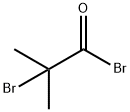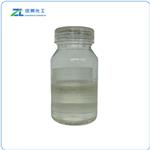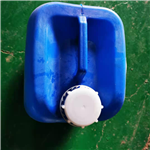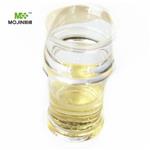Description
2-Bromoisobutyryl Bromide is a kind of bromide being useful in the chemical industry. It is used as an intermediate for the synthesis of pharmaceuticals, agrochemicals, dyes and other organic chemicals1. It can be used as atom transfer radical polymerization (ATRP) initiator for functionalization of hydroxyl groups present on the surface of graphene oxide; to form an N-protected halodienamide which provided fourand five-membered lactams in the presence of copper (I) and a tertiary amine; in preparation of polycaprolactone macroinitiator via reaction with oligomeric caprolactone dio and mesoporous silica nanoparticles with ATRP initiator anchored on the exterior surface2,3. As a initiator precursor, it can also be used for surface modification of Ethylene-vinyl alcohol (EVOH) copolymer films to grow surface-grafted poly-(acrylamide) chains.
Sources
- http://www.chemicalland21.com/specialtychem/finechem/2-BROMOISOBUTYRYL%20BROMIDE.htm
- https://www.alfa.com/zh-cn/catalog/B24249/
- https://www.sigmaaldrich.com/catalog/product/aldrich/252271?lang=en®ion=US
- https://pubs.acs.org/doi/abs/10.1021/bk-2003-0854.ch025
Chemical Properties
colourless liquid
Uses
α-Bromoisobutyryl bromide has been used:
- as atom transfer radical polymerization (ATRP) initiator for functionalization of hydroxyl groups present on the surface of graphene oxide
- to form an N-protected halodienamide which provided four- and five-membered lactams in the presence of copper (I) and a tertiary amine
- in preparation of polycaprolactone macroinitiator via reaction with oligomeric caprolactone diol and mesoporous silica nanoparticles with ATRP initiator anchored on the exterior surface
Uses
2-Bromoisobutyryl bromide is used to prepare N-protected halodienamide, which provides four- and five-membered lactams in the presence of copper(I) and a tertiary amine. Further, it is used as atom transfer radical polymerization(ATRP) initiator for functionalization of hydroxyl groups present on the surface of graphene oxide. It is also used in preparation of polycaprolactone macroinitiators through reaction with oligomeric caprolactone diol and mesoporous silica nanoparticles with ATRP initiator anchored on the exterior surface.




